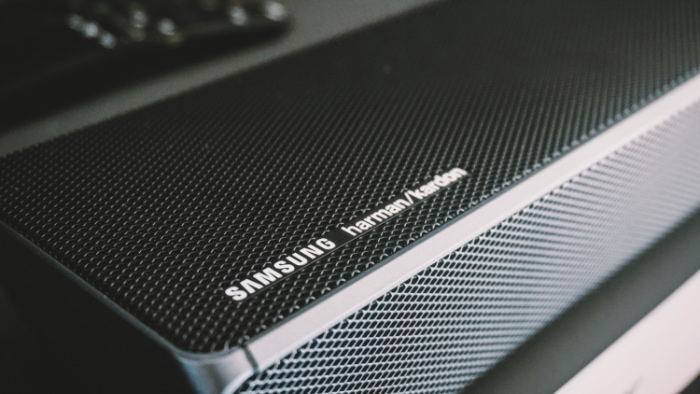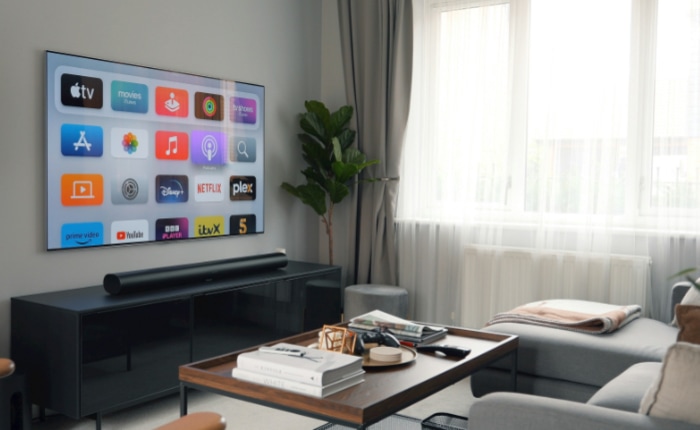Audio Passthrough: The Gateway to Clarity

Audio passthrough might seem like a technical term reserved for sound engineers and audiophiles, yet it plays a crucial role in how we experience movies, music, and games in our homes.
Basic Principles of Audio Passthrough
Audio passthrough serves as a vital function within home entertainment systems, ensuring that audio signals are transferred from a source device directly to an output device without any alteration. This process is key to maintaining the original sound quality of content, be it a film, music, or a video game.
What Is Audio Passthrough?
Audio passthrough is a feature that allows audio data to move through a device unchanged. For instance, when you play a movie on a Blu-ray player connected to an AV receiver, the audio passthrough function enables the audio signal to bypass the TV’s internal processing.
As a result, the AV receiver decodes the original audio track, from basic stereo to high-definition formats, ensuring the sound you hear is as the creators intended.
How Audio Passthrough Works
The mechanism behind audio passthrough is straightforward yet sophisticated. It involves several components of your home entertainment system, including media players, soundbars, and AV receivers.
These devices communicate through connections such as HDMI cables, facilitating the direct transmission of audio signals. The key is that the audio data does not undergo unnecessary conversions or downmixing by intermediary devices, preserving its fidelity from source to speaker.
Types of Audio Signals
Understanding the types of audio signals helps in appreciating the role of audio passthrough. Audio signals can be uncompressed or compressed:
- Uncompressed Audio: This format includes linear pulse-code modulation (LPCM) signals, often used in CDs and Blu-rays. Uncompressed audio offers the highest quality because it is not altered or reduced in any way.
- Compressed Audio: These signals have been encoded to use less data, making them easier to transmit or store. Formats like Dolby Digital and DTS are examples of compressed audio. Though compressed, these formats can still deliver high-quality sound, especially when transmitted through audio passthrough.
The Role of Audio Passthrough in Home Entertainment
The integration of audio passthrough into home entertainment systems marks a significant enhancement in how we experience audio in our personal spaces. This technology, while complex in its operation, offers a simple promise: to deliver audio in its most authentic form, directly from the source to your ears.
Enhancing Audio Quality
Audio passthrough stands out as a bridge that carries sound in its purest form across the various components of a home entertainment system. By allowing audio signals to bypass the internal processing of devices like TVs, the technology ensures that what you hear is true to the original recording.
This fidelity is paramount for creating immersive soundscapes that draw you deeper into the action on screen, be it the subtle rustle of leaves in a quiet scene or the thunderous roar in an action-packed sequence.
Compatibility with Home Entertainment Devices
A wide range of devices within the home entertainment ecosystem supports audio passthrough, making it a versatile feature for any setup. This includes:
- AV Receivers: These are perhaps the most crucial components in a home theater system for utilizing audio passthrough, decoding high-definition audio formats to deliver a surround sound experience.
- Soundbars: Modern soundbars offer audio passthrough capabilities, providing a streamlined, space-saving option for enhancing audio quality without a full AV receiver setup.
- Streaming Devices: Devices such as media players and game consoles often support audio passthrough, ensuring that the audio from streamed content or games is as immersive as their visuals.
The Immersive Experience
The ultimate role of audio passthrough in home entertainment is to create a deeply immersive listening experience. This technology ensures that soundtracks, dialogues, and sound effects are conveyed with clarity, depth, and nuance.
Whether you’re a movie buff seeking cinema-quality sound at home or a gamer looking for an enveloping audio experience, audio passthrough is key to achieving these audio vistas.
Future-Proofing Your System
Adopting audio passthrough also means future-proofing your entertainment setup. As audio technologies evolve and new formats emerge, systems that support audio passthrough will be able to handle these advancements, ensuring that your home theater remains on the cutting edge of audio excellence.
Formats Supported by Audio Passthrough
The effectiveness of audio passthrough in a home entertainment system significantly depends on the audio formats it supports. This capability ensures compatibility with a wide range of content, from the latest blockbuster movies to classic albums and beyond.
Common Audio Formats for Passthrough
Audio passthrough supports an array of formats, each designed to cater to different aspects of the audio experience. Here’s a look at some of the most prevalent formats you’ll encounter:
- Dolby Digital: A standard in surround sound, Dolby Digital compresses audio to provide a full range of sound with up to 5.1 channels. This format is widely used in DVDs, Blu-rays, and streaming media.
- DTS: Similar to Dolby Digital, DTS (Digital Theater Systems) also offers compressed surround sound audio but is often thought to use less compression for potentially higher quality. It supports up to 5.1 channels as well.
Advanced Audio Formats
As technology advances, so do the capabilities of audio passthrough, accommodating more sophisticated audio formats:
- Dolby TrueHD: This format delivers lossless audio, meaning there is no quality loss from the original recording. It’s capable of supporting up to 7.1 channels of high-definition audio, making it a favorite for Blu-ray discs.
- DTS-HD Master Audio: Offering a similar lossless audio experience, DTS-HD Master Audio can provide up to 7.1 channels. It is revered for its ability to deliver audio at the exact bitrates as the studio master recordings.
The Importance of High-Definition Audio Formats
The introduction of high-definition audio formats such as Dolby TrueHD and DTS-HD Master Audio through audio passthrough has revolutionized home audio systems. These formats ensure that listeners receive the highest quality sound, comparable to studio recordings.
Whether it’s the subtle nuances in a piece of music or the explosive action in a movie scene, these formats capture every detail, providing an unparalleled auditory experience.
Setting Up Audio Passthrough

Integrating audio passthrough into your home entertainment system may seem daunting, but it’s a straightforward process that can significantly elevate your audio experience. This setup ensures that the sound from your movies, music, or games is transmitted in its purest form, providing a more immersive and high-quality audio experience.
Preparing Your Devices
Before diving into the settings, it’s vital to ensure that all your devices are compatible with audio passthrough and are connected correctly. This typically involves:
- Checking Device Compatibility: Verify that your source device (like a Blu-ray player or streaming device), AV receiver or soundbar, and output device (such as a television) support the audio formats you wish to use.
- Connecting with HDMI: For the best results, use HDMI cables to connect your devices. HDMI supports a wide range of audio formats and is the most common way to enable audio passthrough.
Enabling Passthrough on Your AV Receiver or Soundbar
The central hub for managing audio passthrough in most setups is the AV receiver or soundbar. Here’s how to enable it:
- Access the Device Settings: Use the device’s remote to navigate to the audio settings menu.
- Select the Passthrough Option: Look for an option labeled “Passthrough,” “Direct,” or something similar. Enabling this setting will allow the audio signal to bypass the device’s processing and be sent directly to the speakers or next device in the chain.
Configuring Source Devices
Many source devices, like media players or game consoles, also require configuration to send the correct audio signal:
- Open the Audio Settings: Find the audio settings in the device’s menu.
- Choose the Correct Output Format: Select an output format that matches the capabilities of your AV receiver or soundbar. If unsure, “Auto” is usually a safe choice, as it allows the device to select the best format based on the connected equipment.
Troubleshooting Common Issues
Even with proper setup, you might encounter issues. Here are a few tips:
- No Sound: If there’s no sound after enabling passthrough, double-check your HDMI connections and ensure all devices are set to the correct audio format.
- Low Quality or Distorted Sound: This may indicate a mismatch in supported audio formats. Verify that the selected format is supported by your AV receiver or soundbar.
Final Checks
After configuring your devices, test the setup with content known to have high-quality audio. This will help you confirm that audio passthrough is working correctly and that you’re experiencing the best possible sound quality.
Advantages and Limitations of Audio Passthrough
Audio passthrough is a significant feature in the realm of home entertainment, promising to enhance the way we experience sound. Its adoption across various devices and setups underscores its importance in achieving high-quality audio reproduction.
However, like any technology, audio passthrough comes with its own set of advantages and limitations.
Advantages of Audio Passthrough
Uncompromised Audio Quality: The primary advantage of audio passthrough is its ability to maintain the original audio quality. By bypassing internal processing and directly transmitting the audio signal, users enjoy sound that is true to the source.
This is particularly beneficial for audiophiles and enthusiasts who seek the most authentic listening experience possible.
Support for High-Definition Audio Formats: Audio passthrough enables support for advanced audio formats, including Dolby TrueHD and DTS-HD Master Audio. These formats offer superior sound quality with lossless compression, providing a more immersive and detailed audio experience that standard formats cannot match.
Simplified Audio Setup: With audio passthrough, setting up your home audio system becomes more straightforward. It reduces the need for multiple cables and configurations, as the AV receiver or soundbar directly handles the audio decoding.
This simplicity can be a significant advantage for users looking to streamline their entertainment setups.
Limitations of Audio Passthrough
Compatibility Issues: One of the main limitations of audio passthrough is compatibility. Not all devices support all audio formats, which can lead to inconsistencies in audio playback.
Users may need to ensure that their source devices, AV receivers, and output devices are all compatible with the specific formats they wish to use.
Potential for Increased Latency: In some cases, audio passthrough can introduce a slight delay in audio transmission. While often imperceptible, this delay can become noticeable in certain setups, potentially affecting the synchronicity between audio and video.
This is something users may need to consider, especially in gaming or live performances.
Dependence on Quality Equipment: The effectiveness of audio passthrough also hinges on the quality of the equipment used. High-quality HDMI cables and devices that accurately support the desired audio formats are essential for maximizing the benefits of audio passthrough.
This requirement can mean additional investment for those looking to upgrade their system.
Conclusion
Exploring the nuances of audio passthrough has unveiled its pivotal role in home entertainment, offering insights into how it operates, the formats it supports, and how to set it up for an optimal audio experience. Audio passthrough, by allowing sound to be transmitted in its most authentic form, stands out as a key feature for audiophiles and casual listeners alike, aiming to recreate the most immersive and high-quality soundscapes possible.
Through a closer look at its advantages and limitations, we’ve identified the importance of compatibility, the potential for latency, and the necessity for quality equipment to truly harness the power of audio passthrough. These considerations are essential for anyone looking to enhance their home audio system.
Equipped with this knowledge, readers can make informed decisions on integrating audio passthrough into their setups, ensuring they capture every detail and nuance of their favorite audio content. As technology advances and more devices support sophisticated audio formats, the relevance and benefits of audio passthrough will only grow, making it an indispensable feature for achieving unparalleled sound quality in home entertainment systems.


